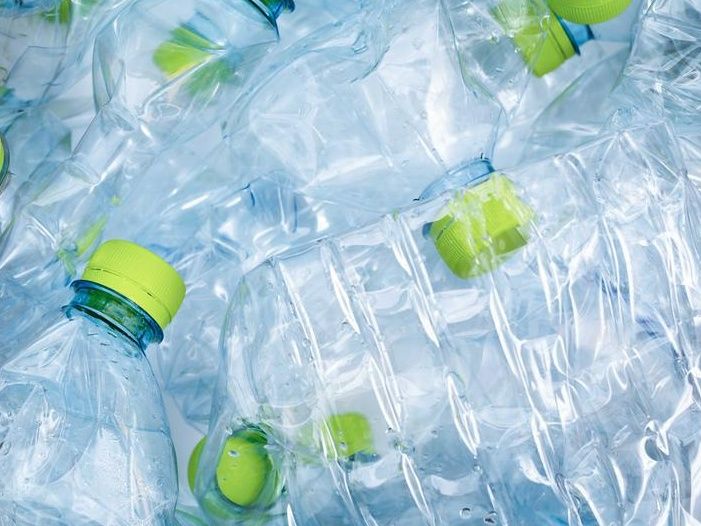How nanoplastics can influence metabolism
PET, the plastic used to make bottles, for example, is ubiquitous in our natural environment. In a joint study, scientists from Leipzig University and the Helmholtz Centre for Environmental Research (UFZ) investigated the negative effects that tiny plastic PET particles can have on the metabolism and development of an organism. Their findings have now been published in the journal “Scientific Reports”.

PET plastic bottles are a major burden on the environment.
Colourbox
The increasing use of plastic is threatening ecosystems around the world. One of the big concerns is the presence of plastics in the form of small particles, also called microplastics and nanoplastics. These particles have been detected in drinking water, food and even air. Nanoplastics can be absorbed by humans and animals through food as well as water. There are concerns that microplastics can accumulate in the body over time. Since their full effects on human health are still unknown, they are the subject of scientific research, as in the current study by Leipzig University.
Polyethylene terephthalate, known as PET, is a widely used plastic. It is used to make plastic bags as well as practical containers for food and drinks. Little is known so far about the damaging effects of PET nanoplastics. In a recently published research project, scientists at Leipzig University focused on the effects of PET nanoplastics on zebrafish embryos.
They found that the tiny plastic particles accumulated in several organs of the model animals, including the liver, intestine, kidney and brain. In addition, PET nanoplastics caused behavioural abnormalities in the embryos, as less movement was observed. “Our study provides the very first insight into the toxicity pathways induced by PET nanoplastics and the underlying damaging mechanisms in intact zebrafish larvae. We found that liver function was significantly impaired and that there was oxidative stress. PET nanoplastics also affect the cellular membrane and energetics of living organisms,” said corresponding author Dr Alia Matysik, a scientist at the Faculty of Medicine’s Institute of Medical Physics and Biophysics.
High-resolution magic-angle spinning (HRMAS), a non-invasive analytical technique that applies nuclear magnetic resonance (NMR) to solids and soft matter, was used to study zebrafish embryos. This scientific method has the advantage of being able to look into matter from the outside without, for example, having to damage tissue or insert instruments into the body. This study combined research on the metabolism of zebrafish cells and tissues, with cellular assays and behavioural tests. “We used state-of-the-art analytical NMR methods to obtain a comprehensive system-level understanding of the metabolic pathways affected by PET nanoplastics. We were able to observe how PET accumulation changes the biochemistry of an organism,” says Dr Matysik.
“This research finding highlights the adverse effects of PET nanoplastics, which have been observed in zebrafish embryos and may also play a role in mammals and humans. While we do not yet have a clear answer to this question, it is now safe to assume that PET nanoplastics are disrupting our ecosystems. In any case, plastics should be prevented from entering the environment. Presumably, avoiding this form of waste will be the big challenge of the near future,” says Professor Jörg Matysik from the Institute of Analytical Chemistry, who was involved in his wife’s study.
The scientists at Leipzig University plan to continue their research on this topic and also to investigate the effects of nanoplastics on brain function. “We’re already seeing PET nanoplastics accumulate in the brain. We now want to find out whether this has an impact on brain function and neurodegenerative diseases,” says Dr Alia Matysik.
Original publication
Other news from the department science

Get the food & beverage industry in your inbox
By submitting this form you agree that LUMITOS AG will send you the newsletter(s) selected above by email. Your data will not be passed on to third parties. Your data will be stored and processed in accordance with our data protection regulations. LUMITOS may contact you by email for the purpose of advertising or market and opinion surveys. You can revoke your consent at any time without giving reasons to LUMITOS AG, Ernst-Augustin-Str. 2, 12489 Berlin, Germany or by e-mail at revoke@lumitos.com with effect for the future. In addition, each email contains a link to unsubscribe from the corresponding newsletter.



























































